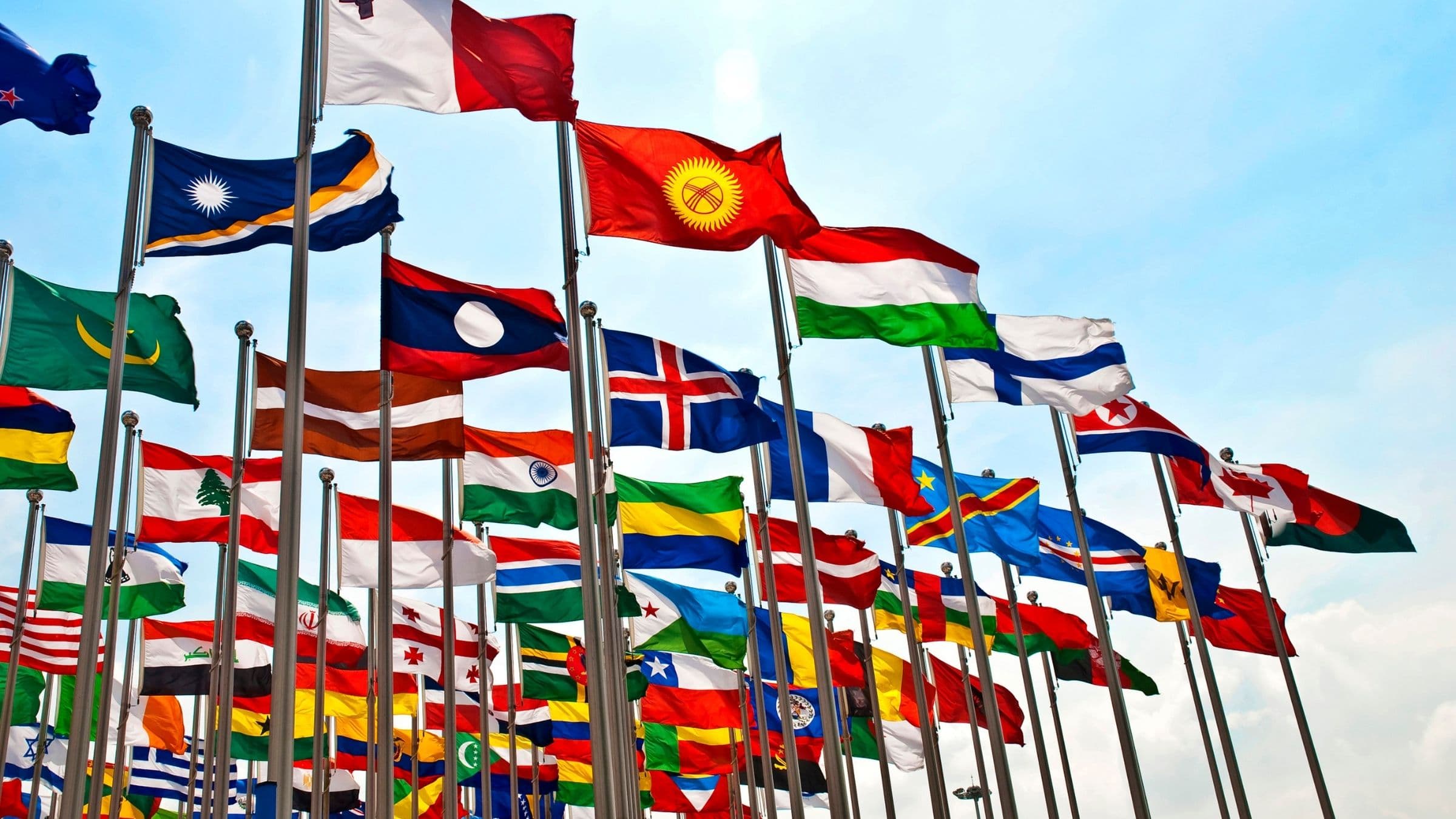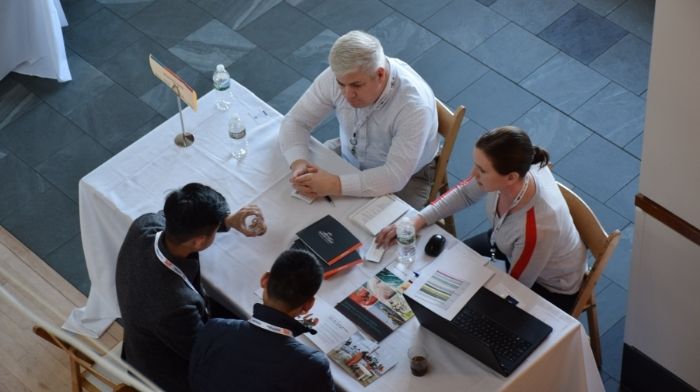
COUNTRY PROFILE
Discover more about the Morocco market including overviews about the retail, foodservice, and food-processing sectors. Events, resources, and more are linked throughout the profile.

2nd
second largest U.S. export market for processed foods in North Africa

$26.3 Million
total U.S. processed food exports to Morocco in 2023

37 Million
population of Morocco in 2023
Euromonitor reports that Morocco’s economic growth slowed down in 2022, due to lower agricultural output and surging inflation, yet strong tourist inflows, growing industrial potential and surging exports helped to prevent a recession. Looking ahead, Morocco’s gross domestic product (GDP) growth is expected to recover as inflation subsides and agricultural activity rebounds. Benefiting from vast renewable energy reserves, Morocco is also expected to remain a go-to investment destination in Africa.
The U.S. and Morocco signed a Free Trade Agreement (FTA) on June 15, 2004, which entered into force on January 1, 2006. The FTA is a comprehensive agreement that supports the significant economic and political reforms that are underway in Morocco and provides for improved commercial opportunities for U.S. exports to Morocco by reducing and eliminating trade barriers. The FTA Subcommittees on Agricultural Trade and Sanitary and Phytosanitary Matters also met in September 2012 and discussed Morocco’s implementation of the tariff-rate quotas established under the FTA to afford U.S. wheat producers preferential access to the Moroccan market. The U.S. continues to have serious concerns about Morocco’s administration of these tariff-rate quotas.
The population of Morocco was 37 million in 2023 (CIA World Factbook Est.). The median age was 30.2 years and those over 65 years totaled 8% or about 3 million people. The population growth rate is 0.88%.
Morocco is the second largest U.S. export market for processed foods in North Africa, after Egypt. U.S. exports of processed foods to Morocco declined 1% to $31.1 million in 2022. By year to date (YTD) November 2023, U.S. processed food exports again declined 6% to US26.3 million.
Top U.S. processed food exports to Morocco in 2023 included:

$11.4 Billion
estimated total retail sales in the packaged food market in 2023

21.7%
growth rate of retail sales in the packaged food market since 2019

19.8%
expected growth rate of packaged food by 2028
According to Euromonitor, retail sales in the packaged food market in Morocco reached US$11.4 billion in 2023. That represents a growth rate of 21.7% or US$2 billion since 2019. By the year 2028 the retail sales in the packaged food market in Morocco is expected to reach US$14.4 billion, a growth rate of 19.8% and US$2.3 billion from 2024.
High growth products in the forecast include:
FAS Post Rabat reports that it is estimated that 33% of Moroccans from the middle and upper classes shop at medium-sized markets and supermarkets at least once a week. In contrast, those who continued to patronize small local grocers tend to be from lower-income groups. As a result, supermarket shopping links directly to purchasing power. According to recent studies, more than half (53%) of Moroccan supermarket shoppers earn at least MAD20,000 (US$2,160) per month, compared to 27% who earn less than MAD6,000 (US$648). The trend is, however, shifting due to changing lifestyles in urban areas and improved penetration of supermarkets in rural and peripheral areas.
Euromonitor reports that Label’Vie continued to expand its Carrefour Market banner in 2022 to consolidate its leadership across Morocco. The company’s performance was also supported by its substantial brand equity, differentiated by an extended range of private label products. In 2022, Carrefour also expanded its offerings in premium ranges through the Carrefour Market Gourmet format. However, growth in the number of outlets was relatively slower due to shoppers’ increased price sensitivity. Moreover, Carrefour Market continues to face intensified competition from the Marjane Market, leveraging the group’s real estate, brand equity and digital capabilities to continue gaining traction in Morocco.
Carrefour Market is increasingly focused on fresh food, with almost half of the selling space of its new outlets dedicated to these products. Towards the end of the review period (2023), Label’Vie had 87 Carrefour Market supermarkets in 26 cities and towns that were supplied by four logistics centers. According to Label’Vie, the average basket size at Carrefour Markets is US$21.84.
U express is showing a relative slowdown in expansion since the launch of its first store in 2019. According to a report from 2021, the company was expected to reach 10 outlets by the end of 2020. The last outlet officially launched in December 2021, bringing the total number of stores to four. This would be down from the operational balance of 50 to 100 outlets. Initially overlooked by stakeholders, the slowdown was affected by the early divestment from SBM (ex-Brasseries du Maroc), which initially held 33% stakes in the local subsidiary. The performance of the new entrants was also likely to be affected by hiking prices, rising production costs and droughts, which predominantly affected business models focusing on fresh food and premium offerings.
The number of small local grocers converting their stores into supermarkets is likely to accelerate during the forecast period (2028). The proprietors of these outlets are increasingly aware that consumers, particularly young adults and working mothers, value the convenience of supermarket shopping. Moreover, they are coming under increased competitive pressure as supermarkets proliferate in suburban locations, and some will be forced to change to keep their doors open.
However, the popularity of the supermarket is likely to remain threatened by the rapid expansion of discounters that usually offer essential products at more affordable prices. The category will also be affected by momentum in emerging formats, such as convenience stores, benefiting from their proximity to households. In response to the intensified competition, Marjane may consider further diversifying its portfolio across the grocery category to remain relevant and keep pace with Label’Vie, which has eight Carrefour Express conveniences stores and 16 Supeco discounter’s banners to balance demand across a diversified set of consumer behaviors.
Euromonitor reports that Moroccan consumer foodservice witnessed slow growth in 2021, due to the ongoing pandemic restrictions and curfews which only ended in November 2021. In 2022, with the reopening of society, foodservice such as restaurants and cafés regained growth momentum, despite the increasingly high inflation rates, bringing a sigh of relief to the hospitality industry.
Several reasons account for the growth. Firstly, Morocco’s food consumer price index (CPI) inflation is the second lowest in North Africa, after Tunisia. More so, Moroccan consumers who visit restaurants and cafés typically have strong enough purchasing power. This explains the resilience of consumer foodservice in the country, in the face of the crisis. The recovery of the tourism industry also saw dynamic growth in the number of tourist arrivals in 2022, compared to 2021, which further boosts demand. Also, the build-up of significant foreign exchange reserves, covering over six months of imports at the end of 2021, provided a buffer to absorb the impact of the global commodity price shock in 2022. Lastly, there is the rapid emergence of food delivery and e-commerce in the country, due to the fact that Morocco is still seen as a stable and a secure business and living environment.
An increasing number of North American brands are entering Morocco, such as Tim Hortons. Tim Hortons Inc., commonly nicknamed “Tim’s” or “Timmy’s,” is a Canadian multinational coffeehouse and restaurant chain, which serves coffee, doughnuts, and other fast-food items. Indeed, many other international brands are also coming to Morocco, due to the stable business environment and an industry that is not as sensitive to prices, as the majority of consumers of foodservice in Morocco are able to afford the prices.
